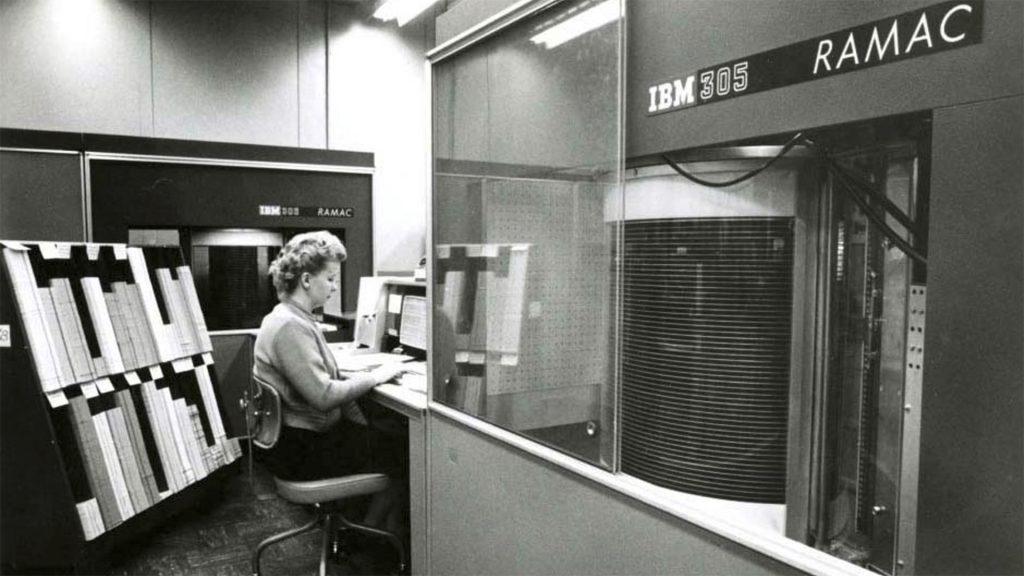HDDs aren’t dead yet, and thus today we can celebrate the aging spinning rust data storage medium’s 69th birthday. On this day in 1956, IBM announced the RAMAC 350 Disk Storage Unit, packing an awe-inspiring 3.75MB of data across 50 magnetic platters, each spanning 24-inches in diameter and spinning at 1,200 RPM. This magnetic disk-based storage, which earned the nickname the ‘baloney slicer,’ was designed to partner with IBM’s RAMAC 305 mainframe vacuum-tube based computer system.
RAMAC is short for Random Access Method of Accounting and Control. The IBM RAMAC 305 computer system paired with the 350 disk, for its high speed random access to information, and delivery of “exponentially faster” performance and efficiency vs prior storage technologies.

Watch On
This innovation was revolutionary for businesses, who often used on systems reliant on punch cards, for example. RAMAC 350 would allow businesses to get rid of their old tub files full of punch cards, and many human filing operatives. IBM’s historical blog post about the RAMAC notes the device became the “progenitor of all hard disk drives… paved the way for the invention of the relational database… and ultimately laid the groundwork for everything from spaceflight and ATMs to search engines and e-commerce.”
You may like
In some of the old images and videos showing off the RAMAC 350 you can see operators feeding it punch cards. The 3.75MB of storage this direct hard disk ancestor put on random-access tap was equivalent to approximately 62,500 punch cards – or about five million characters of text.

IBM refined the RAMAC 350 by working on the seek speeds of the multi-arm read/write heads across all its huge platters. Only after it achieved 800ms data seeking perfromance did the first of these disk storage units get rolled out to customers.
Though its digital data storage capacity seems tiny when compared to modern technologies, the RAMAC 350 was incredibly bulky. So indeed, when it was rolled out, it actually had to be rolled around like a piano.

According to IBM, the RAMAC 350 weighed about a ton and was about the same size as two kitchen refrigerators put together. When paired with the RAMAC 305 mainframe, you’d need a good-sized office to house one of these computer systems.
In 2025, some already throw scorn on HDDs, though they can remain the most viable solution for data hoarders and some business applications. Even consumers can grab a 26TB HDD for a little over $500. The same budget is only enough to get an 8TB SSD.
Follow Tom’s Hardware on Google News, or add us as a preferred source, to get our up-to-date news, analysis, and reviews in your feeds. Make sure to click the Follow button!

